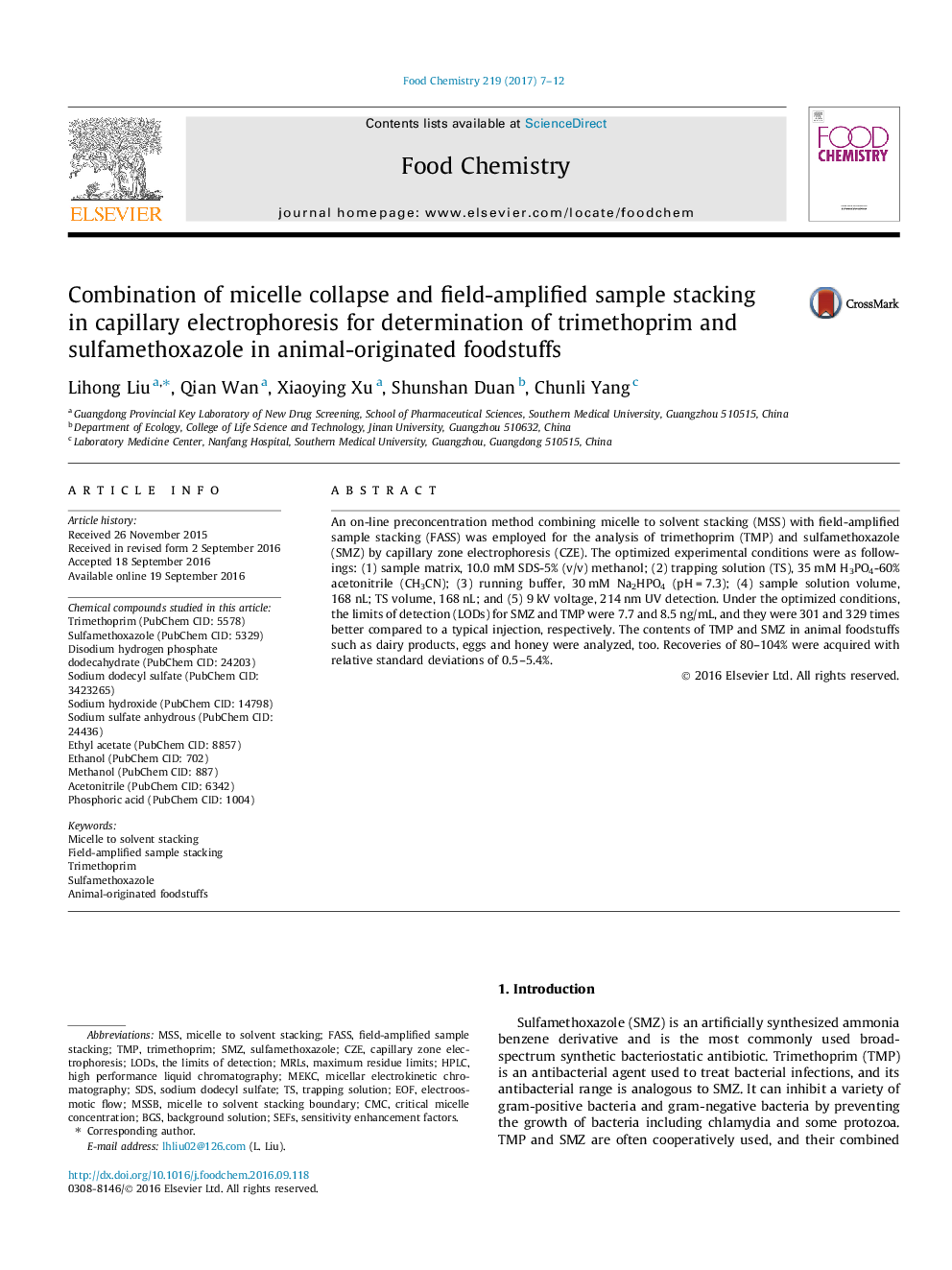| Article ID | Journal | Published Year | Pages | File Type |
|---|---|---|---|---|
| 5134120 | Food Chemistry | 2017 | 6 Pages |
â¢A combination of two-state mechanism for trimethoprim and sulfamethoxazole determination was proposed.â¢The sensitivity could be improved 301 and 329 times for SMZ and TMP, respectively.â¢The limits of detection (LODs) were 8.5 ng/mL for TMP and 7.7 ng/mL for SMZ.â¢The LODs were lower than the maximum residue limits in foods of animal origin.
An on-line preconcentration method combining micelle to solvent stacking (MSS) with field-amplified sample stacking (FASS) was employed for the analysis of trimethoprim (TMP) and sulfamethoxazole (SMZ) by capillary zone electrophoresis (CZE). The optimized experimental conditions were as followings: (1) sample matrix, 10.0Â mM SDS-5% (v/v) methanol; (2) trapping solution (TS), 35Â mM H3PO4-60% acetonitrile (CH3CN); (3) running buffer, 30Â mM Na2HPO4 (pHÂ =Â 7.3); (4) sample solution volume, 168Â nL; TS volume, 168Â nL; and (5) 9Â kV voltage, 214Â nm UV detection. Under the optimized conditions, the limits of detection (LODs) for SMZ and TMP were 7.7 and 8.5Â ng/mL, and they were 301 and 329 times better compared to a typical injection, respectively. The contents of TMP and SMZ in animal foodstuffs such as dairy products, eggs and honey were analyzed, too. Recoveries of 80-104% were acquired with relative standard deviations of 0.5-5.4%.
